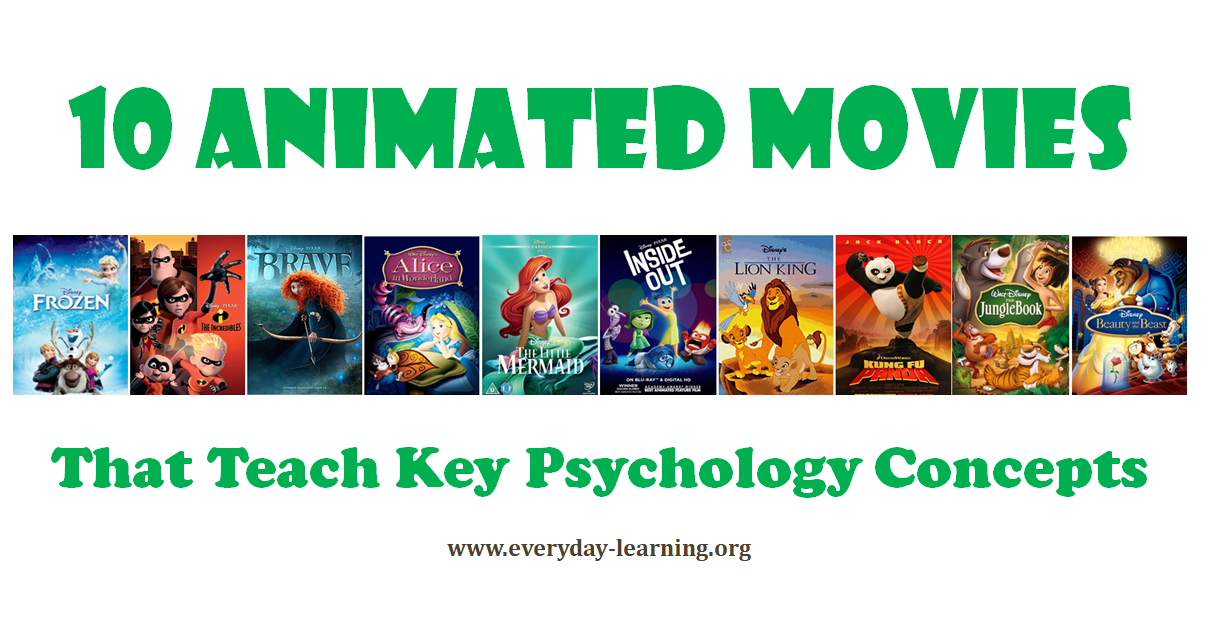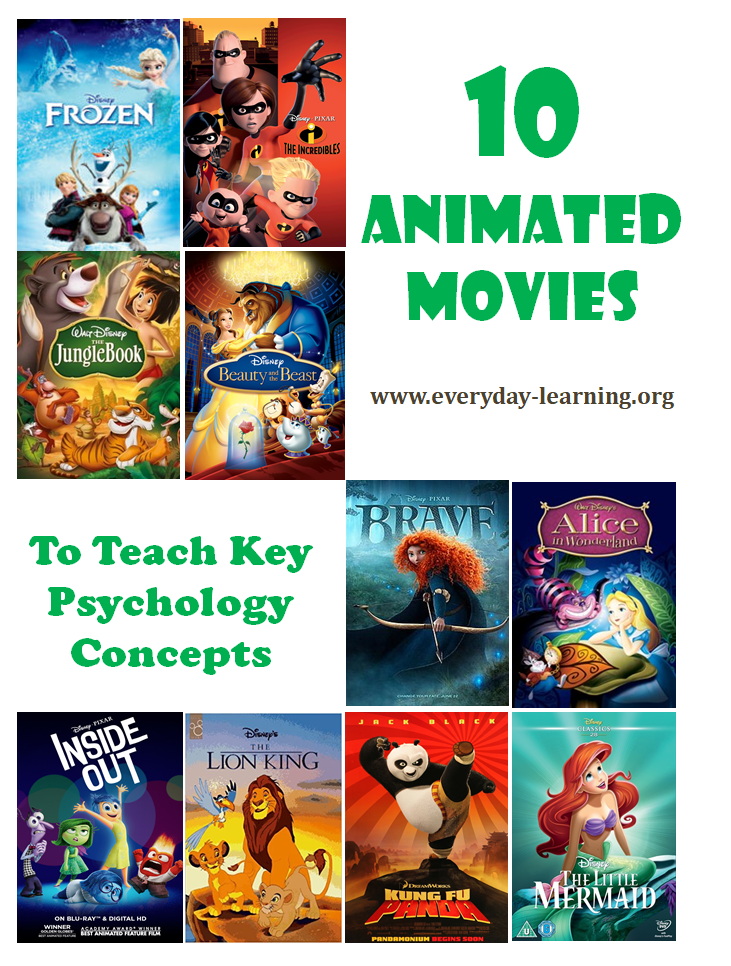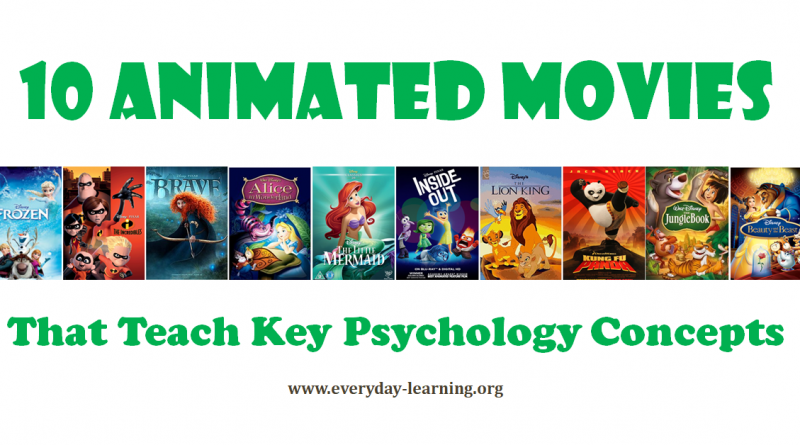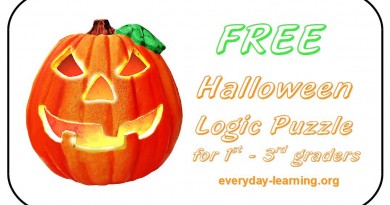Teaching Psychology With Animated Movies

As a child of the 1970s, I grew up with a love-hate relationship with animated movies. With no VCRs or TiVo to record shows, we planned our lives around the announcement of an animated movie to be aired on prime time TV or that Disney was re-releasing a classic movie to the big screen. Oh, the excitement of seeing a Peanuts movie or singing bib-a-dee-bop-a-dee-boo along with Cinderella’s mice.
But, by the time I was 8-years old, actually watching the movies put me into a mini-depression.
Take the classic: Rudolph the Red-Nosed Reindeer. A movie featurung everyone’s favorite paternalistic philanthrope – you know, Santa, the guy who judges **you** for being good or bad – being downright mean to a young buck born differently. Even Rudolph’s own father was so ashamed of Rudolph that he forced Rudolph to conform to society’s norms by wearing a prosthetic nose to hide his difference. The stress and anxiety of being bullied and teased got to the point that Rudolph ran away from home . . . and no one cared! Rather than showing that adults have the capacity to grow and change and do right by children, the movie wraps up with message that if you’re different from the majority, you’ll only be accepted and treated with respect if you can prove your worth and usefulness to the group.
It wasn’t until more than a decade later, as a college student going to see the original animated Beauty and the Beast, that I started to really consider the psychological principles behind animated movies. While much of the world marveled at the ground-breaking animation wonders of the movie, I was thinking:
[1] What father would let his daughter exchange herself as his prisoner?!?!? and
[2] That’s one messed up and abusive romantic relationship between Beauty and the Beast.
 Watching animated movies won’t scar a child for life. In fact, many people can watch the same movie and come away with very different messages. Where one person may watch Winnie-the-Pooh and revel in the blissful thoughts of childhood innocence and friendship, another may see it as a case study in psychological disorders, with each character embodying a distinct caricature of depression, obsessive-compulsive disorder, ADHD, and generalized anxiety.
Watching animated movies won’t scar a child for life. In fact, many people can watch the same movie and come away with very different messages. Where one person may watch Winnie-the-Pooh and revel in the blissful thoughts of childhood innocence and friendship, another may see it as a case study in psychological disorders, with each character embodying a distinct caricature of depression, obsessive-compulsive disorder, ADHD, and generalized anxiety.
If you like teaching psychology with movies, then we have a list for you. Culled from our more comprehensive list of 65+ classic, contemporary, and animated movies that teach about psychology, we’ve picked our top 10 animated movies that you can use with your middle, high school, and college-age students.
Before watching a movie, read up on the essential psychological concept portrayed in the movie. Review key definitions. In some cases, you may be able to look at a movie clip of the original research that led to a particular theory. If you’re looking for a specific psychological disorder, have a check sheet of diagnostic criteria handy.
Once the movie is over, start discussing. Pose open-ended questions to get your students thinking like psychologists. It’s not so much that you are looking for a specific answer, as you are looking to develop observational and critical thinking skills.
| CONCEPT | TEACHING with the Movie | |
 |
States of consciousness; Dreams; Language development | Alice in Wonderland Spoiler alert: Alice didn’t eat magic mushrooms and go on a drug-fueled psychedelic trip. She was just dreaming the whole time. Dreams, however, are a powerful state of consciousness. Sigmund Freud was a big fan of dream analysis and thought they could unlock truths hidden in a person’s unconscious. In addition to dreams, there are other sleep phenomena, such as sleep-talking, that can make bedtime all the more interesting for some people. As you research these topics, bring the conversation back round to hallucinations, both drug-induced ones and those associated with psychological disorders, such as schizophrenia. How are they different? How are they the same? Finally, make time to google “Jabberwocky sentences”. The name may come from Lewis Carroll, but it also relates to the study of language development and linguistics. |
 |
Suppressed memories | Frozen One of the initial premises of the movie is that Princess Anna had her memory suppressed so that she would never remember that her sister, Elsa, had accidentally harmed her when they were younger. The idea of lost or repressed memories is a controversial one in psychology, whereas the concept of dissociation is more widely accepted. Can you explain the difference? |
 |
Child development; social and maternal deprivation; and language acquisition | The Jungle Book In the 1950s, psychologist Harry Harlow conducted a series of experiments on baby monkeys to see what would happen if they were deprived of maternal contact. Let’s just say, the results are unsurprising. At the same time, very few verified and documented examples of feral children – kids who grow up with little to no human contact – exists. You can read about one case study that came to the public’s attention in the 1970s. “Genie” was found at the age of 13, after having been kept tied to a chair in a room by herself, with minimal human contact, since the age of 2. How does your research about maternal deprivation and social isolation square up with Mowgli’s story? |
 |
Emotional development | Inside Out Noted psychologist Paul Ekman was a consultant to the creators of this movie, so it’s not surprising that you’ll find a lot of great think pieces about the teaching value of Inside Out. I suggest you start by understanding the core emotions that are thought to make up the human psyche. (Side Note: The movie chose to portray only 5 because of storyline constraints.) Next, read about the connection between emotional states and memory retrieval. This could be especially useful if you’ve got a kid who stresses out when they take tests. |
 |
Motivation, goal setting | Kung Fu Panda I’m not actually going to encourage you to look at the operant conditioning that is used in the movie to help Po master his martial arts. True, I giggled when Po was slurping noodles while doing push-ups over a fire, but the number of fat-teasing/bullying jokes he endured from his friends was just a bit too much, for me. Instead, I’ll encourage you to examine the psychology of goal-setting and resilience. You can also take a look at Malcolm Gladwell’s theory that it takes 10,000 hours of practice before you can become of a master of a task. That sounds attainable (if you want to practice 3 hours a day, everyday for 10 years straight), but does current research actually back up Gladwell’s claim? |
 |
Developmental psychology, death, self-determination, envy | Lion King Disclaimer: This is one of my least-favorite Disney movies. I’m not going to touch upon the issue of sibling rivalry-turned-fratricide (though you could totally examine the power of envy and how it can be used for positive versus negative means). Nor am I going to talk about the dysfunctional hakuna matata philosophy of ignore-your-problems-and-hope-they-go-away. Instead, my suggestion is to focus on the concepts of the grieving process and self-determination. Identify the 5 stages of grief and see if you can match them up with Simba and specific scenes in the movie. Next, see if you can explain the difference between the ideas of fate and self-determination (which is a psychological theory about motivation). Since the idea of his birth-given right to the throne wasn’t enough to to motivate Simba, can the Self-Determination Theory explain why he eventually went back to his pride? |
 |
Erikson’s Identity Formation, Body dysphoria | The Little Mermaid Read about Erik Erikson’s theory of psychosocial development, paying special attention to the adolescent Identity versus Role Confusion and Intimacy versus Isolation stages. What crises are people supposed to successfully go through at each of these stages that will lead them to a healthy adult life? Has that happened for Ariel? You can also read about dysphoria (which is the opposite of euphoria). Can you draw parallels between Ariel’s intense desire to change her body (ie- permanently swap her mermaid tail for human legs) with the feelings and experiences of a transgender person experiencing gender dysphoria? |
 |
Gender schemas | Brave Back in the 1970s, psychologist Sandra Bem developed her Gender Schema Theory, which talks about how child rearing, media, school, and culture in general influences how a person grows up to identify with their core gender. Find out more about sex-typing and androgyny and see if that applies to this movie. For fun, take the Bem Sex-Role Inventory. How would you update it for the 21st century? |
 |
Stockholm Syndrome, Narcissism | Beauty and the Beast Poor Belle is plagued by men undeserving of her love and attention and, yet, she goes on to marry one. First, there’s her dad who is willing to let his young child be held captive by a monster so he can go free. Then there’s Gaston, who most people assume is a narcissist because he’s so self-absorbed – but I challenge you to watch his character carefully and consider whether he may be using his pompous persona as a cover-up for something else. Finally, there’s the Beast who holds Belle captive and puts her life at risk when he falls into a rage because Belle simply walked into the wrong room. Research Stockholm Syndrome and talk about if and how this diagnosis may apply to Belle. BONUS: If you watch The Little Mermaid, compare and contrast how Gaston and Ariel pursue love-at-first-sight. Would you classify Ariel as narcissistic, also? |
 |
Personality traits, self-esteem, and cognitive dissonance | The Incredibles Hiding one’s true self is a common practice for people who do not feel physically or emotionally safe in life. In the case of the Incredible family, they are forced into hiding because public opinion of superheroes has changed. How does [1] Reaction of others; [2] Comparison with others; [3] Social roles; and [4] Identification affect a person’s self-esteem, especially if they are “in hiding”? |
Sign Up to Receive More FREE Everyday Learning Ideas
Be sure to visit our sister site, Hand In Hand Homeschool, to find more teaching psychology with movies teaching ideas, as well as ideas on using classic and contemporary movies to teach social studies and psychology to your middle, high school, and college students.





